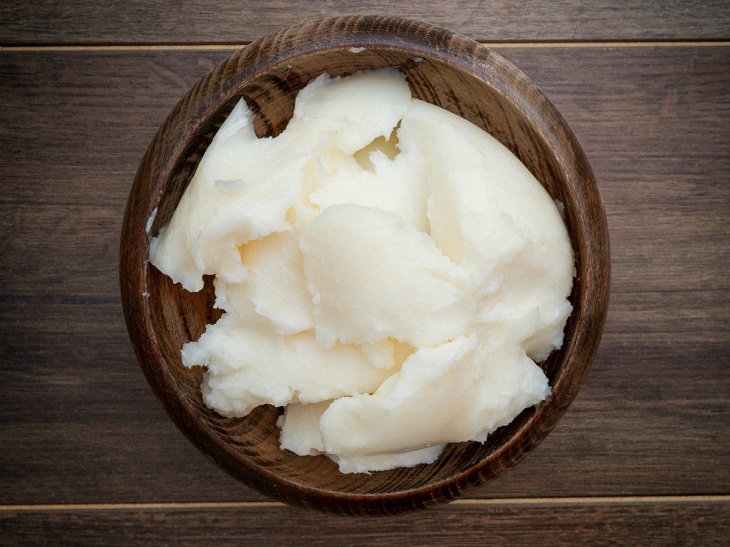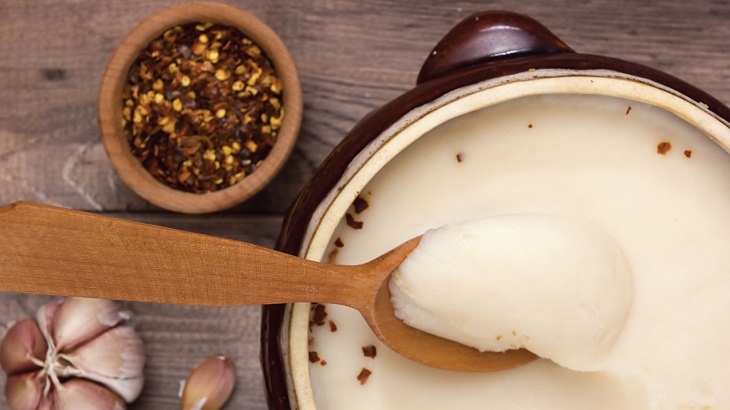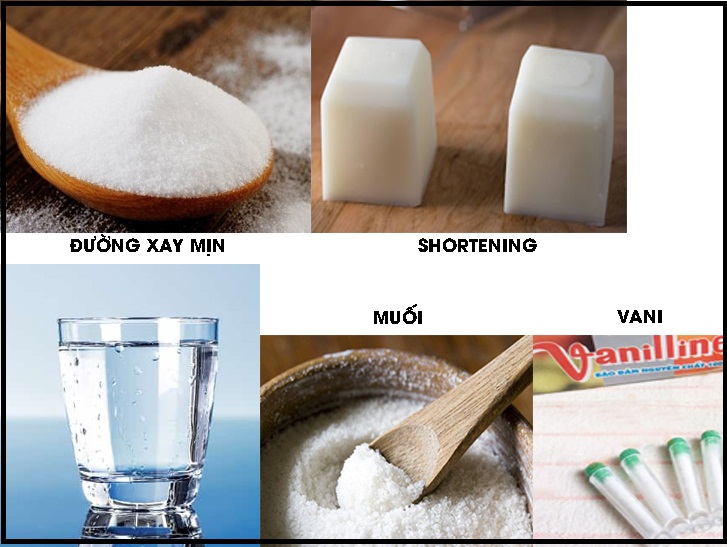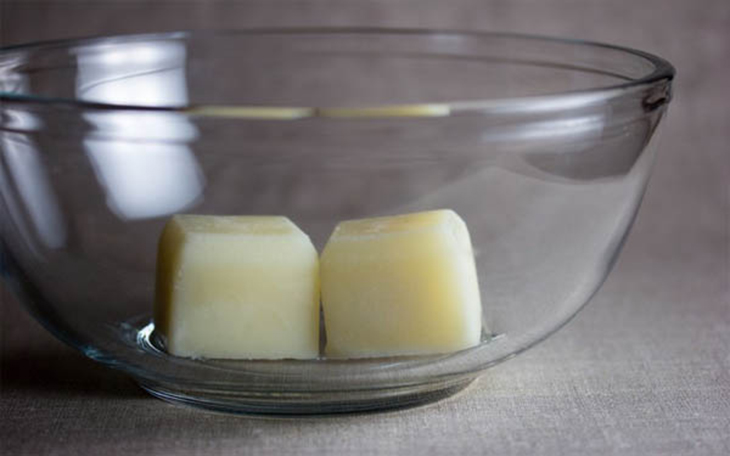1. What is Shortening?
Shortening is a type of fat ingredient that exists in solid form and is produced from vegetable oils (such as soybean oil, cottonseed oil, etc.) blended with lard. Many people refer to shortening as vegetable shortening or vegetable lard.
The characteristics of shortening are its plasticity, lightness, milky white color, smooth and uncracked surface, and it tends to melt at high temperatures.
When melted, shortening has a translucent, pale yellow color, no odor but a distinctive flavor, so it is used for baking or some other cooking recipes.

Shortening is made from fully hydrogenated fatty acids, solidified by the process of hydrogenation between hydro atoms and unsaturated fatty acids (liquid form). Therefore, at room temperature, shortening is in solid form, and its melting point ranges from 40 to 47 degrees celsius.
Shortening can be prepared differently in each country and by each user’s habit. Generally, the composition of shortening is a mixture of various solid oils and preservatives, with no additional additives.
For example: In Malaysia, shortening is made from a combination of 50% palm oil and 50% fish liver oil, or 60% hydrogenated palm oil and 40% shea butter. In Vietnam, it is typically made from approximately 30-50% liquid oil, 40-60% coconut oil, and 20% lard, or a mixture of 50% coconut oil and 50% peanut or sesame oil.

2. The Uses of Shortening
Shortening is widely used in food processing for the following purposes:
- Maintaining the structure of baked goods: shortening helps to preserve the shape of the baked goods and prevent them from collapsing due to its high melting temperature.
- Creating a fluffy and soft texture for pastries: shortening makes the crust of pastries more tender for certain types of pastries such as tarts, pies, shortbread, etc.
- Can be whipped into shortening cream for decorating certain types of pastries.
- Enhancing the sweetness of baked goods.
- Extending the shelf life of baked goods.

3. Where to Buy Shortening?
You can easily find shortening at specialized baking supply stores, local markets, or some online ingredient stores. Be sure to check the source of the product before purchasing. The average price of shortening ranges from 23,000 to 30,000 VND per 500-gram package.
As shortening has a similar fat content to butter, it can be used as a substitute for this ingredient. However, for certain recipes or baked goods, you need to adjust the amount of shortening by reducing it by 18-20% when replacing butter (similar to using margarine).

4. How to Cream Shortening Properly
As shared by Điện máy XANH, shortening can be whipped into shortening cream for decoration on certain types of pastries. Therefore, you can follow the suggested steps below to cream shortening properly!
Step 1: Prepare all the necessary ingredients:
- Fine granulated sugar: 900 grams.
- Shortening: 400 grams.
- Water: 80 ml.
- Salt: about ¼ to ½ teaspoon.
- Vanilla extract: about ½ teaspoon.

Step 2: Follow the steps below:
- First, mix 100 grams of shortening with water, sugar, salt, and vanilla extract in a large bowl. Ensure that all the ingredients are well mixed together.
- Next, add the remaining shortening to the mixture. At this point, use an electric mixer, adjust the speed to low, and beat the mixture for about 5-7 minutes until the shortening becomes fluffy. Use a spatula to scrape the remaining ingredients sticking to the bowl to ensure that the shortening cream is evenly mixed.
- Finally, adjust the mixer to medium speed, and beat the mixture for another 2 minutes until the shortening cream is well whipped.

5. How to Store Shortening Properly
As shortening has a high melting temperature, you can store shortening at room temperature without any issues. However, it is best to prioritize storing it in a cool and well-ventilated place, avoiding areas with excessive moisture.
In addition, shortening has a relatively long shelf life, up to 2 years from the date of production. However, once you open the package for use, it is best to use the shortening within 6 months.

Source: Compiled information






























